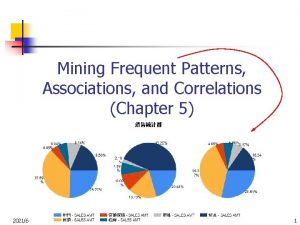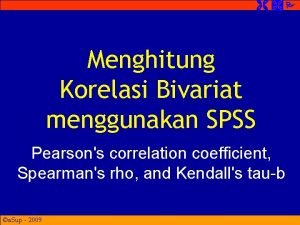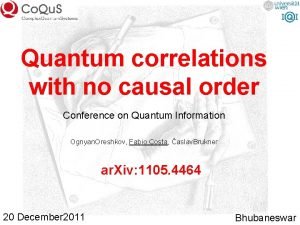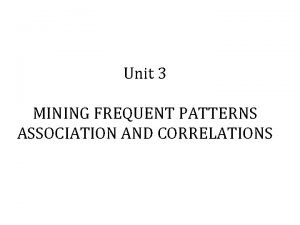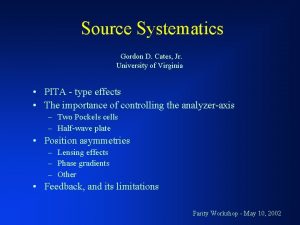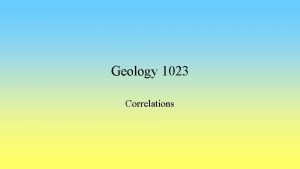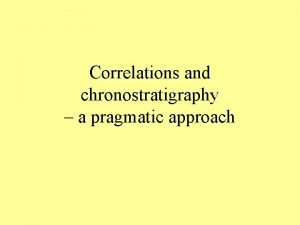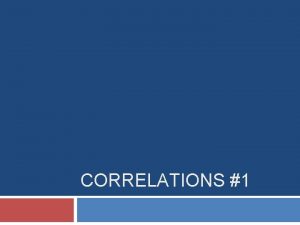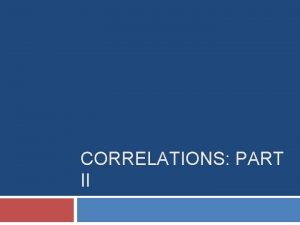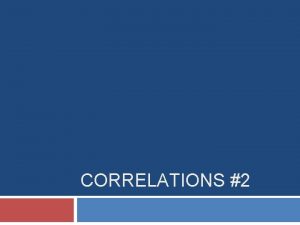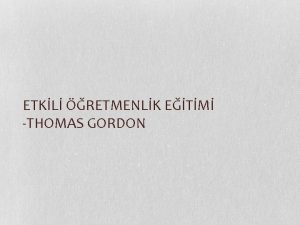Systematic Control of Helicity Correlations Gordon D Cates















- Slides: 15

Systematic Control of Helicity Correlations Gordon D. Cates, Jr. Univ. of Virginia • History of systematic controls in parity experiments. • Different classes of effects and their origins. • Mapping out our work for the future. Parity Workshop - October 26, 2001

Sources of systematics • Failure to produce circularly polarized light due to a nonzero “asymmetric phase D” – Charge asymmetries - the average value of D. – Position asymmetries - the gradients of D. – Beam size/shape asymmetries - higher moments of D. • Beam steering due to lensing/prisming effects from the Pockels cell.

Polarization Induced Transport Asymmetries (The PITA effect) Polarization ellipses that result from various phases Right helicity Left helicity How imperfect circular polarization translates into helicity correlated intensity asymmetries

PITA curve from strained Ga. As cathode • APITA is plotted as a function of D, where D was adjusted using the voltages on the Pockels cell. • Here, the analyzing power that caused the asymmetry was not the laser transport system, but rather a strained Ga. As crystal. PITA curves are routinely used to set feedback parameters in parity experiments.

Helicity correlated position/angle asymmetries from non-phase related sources The data provides a measure of the helicity correlated changes in the angle of the laser beam as a function of the place on the Pockels cell through which the laser passes.

Removing helicity correlated angle asymmetries using point-to-point focusing • Solid squares indicate data taken without lens and point-to-point focusing. • Crosses indicate data taken with lens and point -to-point focusing.

Matching the polarization ellipse’s to the axis of the analyzing power In a Strained Ga. As crystal, there is a preferred axis. Quantum Efficiency is higher for light that is polarized along that axis It is desirable to have a means for orienting your ellipses

The effect of inserting and rotating a halfwave plate

Asymmetries while rotating half-wave plate

Instead, rotate ellipses with two PC’s Consider two Pockels cells with their fast axes set at 45 o to one another.

The “two-dimensional” PITA effect, formulae for APITA for two Pockels cells Now there is a line in the space spanned by D 1 and D 2 for which APITA is zero.

The line in phase space that minimizes APITA

Gradients in the phase D and position asymmetries Left helicity, emitted charge vs. position Right helicity, emitted charge vs. position Linear gradient in D Across laser beam

Laser studies of systematics demonstrating sensitivity to gradients of D across Pockels cell Intensity asymmetry vs. position (averaged over photodiode array) Intensity asymmetry vs. position (single photodiode element) Position asymmetry vs. position (sensitive to the gradient of D) Spot size asymmetry vs. position (sensitive to the 2 nd derivative of D)

What is needed for the future • Empirical work is critical • Machine development time at 5 Me. V or higher • Bench system tests are invaluable if adequate monitoring equipment is available. • Graduate student/post-doc involvement envisioned as integral part of doing experiment.
 Magnetic helicity
Magnetic helicity Jared cates
Jared cates Nick cates design
Nick cates design Mining frequent patterns associations and correlations
Mining frequent patterns associations and correlations Analisis korelasi bivariat
Analisis korelasi bivariat Associations and correlations in data mining
Associations and correlations in data mining Quantum correlations with no causal order
Quantum correlations with no causal order Spurious correlations
Spurious correlations Thinking critically
Thinking critically Mining frequent patterns associations and correlations
Mining frequent patterns associations and correlations Thomas gordon classroom management model
Thomas gordon classroom management model Translational research institute on pain in later life
Translational research institute on pain in later life Product vs process
Product vs process Reynolds transport theorem
Reynolds transport theorem Stock control e flow control
Stock control e flow control Control volume vs control surface
Control volume vs control surface



